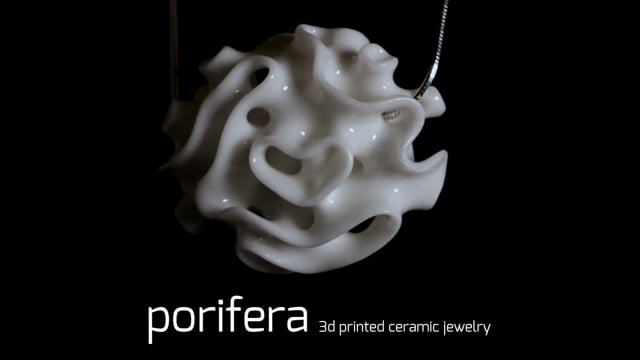
First hinted at back at CES, Formlabs has finally launched its Ceramic resin.
The new silica filled resin is intended to assist building ceramic parts which are then kiln fired to both remove the binder resin and to sinter the ceramic particles together.
This is a new material and poses some interesting moves for Formlabs. For some time, there’s been activity around the world of SLA and ceramic materials (3D Systems’ Bluestone is perhaps the most widely known ceramic filled material) and presents some serious challenges.
One of those is the settling of the particulate over time – and the inherent need to make sure they’re evenly distributed in your resin during the build – something Formlabs solves with a simple guide to mixing any resin in the tray and shaking your build cartridges.
There’s also the more aggressive nature of a ceramic filled resin.
Formlabs machines require that the curing laser passes through the bottom of the build tray, and the machine has an automated wiper system – the combination of the two could cause issues (namely, the wiper degrades the build tray more quickly and stops the curing laser working as efficiently/accurately).
That said, Formlabs are pretty clear that there’s minimal damage to the build tray, though you’re advised not to use its LT resin tanks.

So what does it have on its hands? The Ceramic resin has been used in the Form 2 machines to build smaller pieces (due to the material use guides, rather than the machine limitation) of green parts which can then be fired.
The firing, like with traditional manufacturing methods, helps achieve their particular characteristics of higher temperature resistance, better thermal and electrical insulation and in some cases, better resistance to corrosion and wear.
There’s a pretty nice data sheet for the material here (PDF link), and also some pretty well defined ‘design’ guidelines that it’s fundamental you follow. Scaling, which in this instance, its non-uniformity is particularly key (around 15 per cent in XY and 29 per cent in Z).

Ceramic builds from Ceramic beta testers, Nervous System
If you’re wondering what sort of set up and control you need in terms of firing, you’re looking for a kiln that’s actively ventilated (presumably due to the chemical make-up of the resin being burnt out) and can achieve Cone 8 (~ 1,200 deg C).
Considering that we’re talking about pretty small parts here, there is a wealth of kiln options for the desktop and smaller scale prototyping lab for well under a grand.
If you’re also wondering what Cone 8 (PDF link) means, then anyone with a passing interest in manufacturing techniques and measurement will find the subject of Pyrometric cones fascinating.
If you want to see what’s possible, Jessica at Nervous System has a length, but long-read blog post about the subject and of course, her work is always worth of investigation – particulary in video form.
Porifera – 3D-printed ceramic jewelry inspired by glass sponges from Nervous System on Vimeo.
PS: If anyone has a bead on a used, cheap potter’s wheel, give us a shout.






